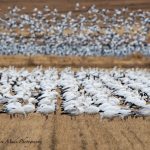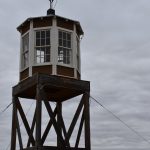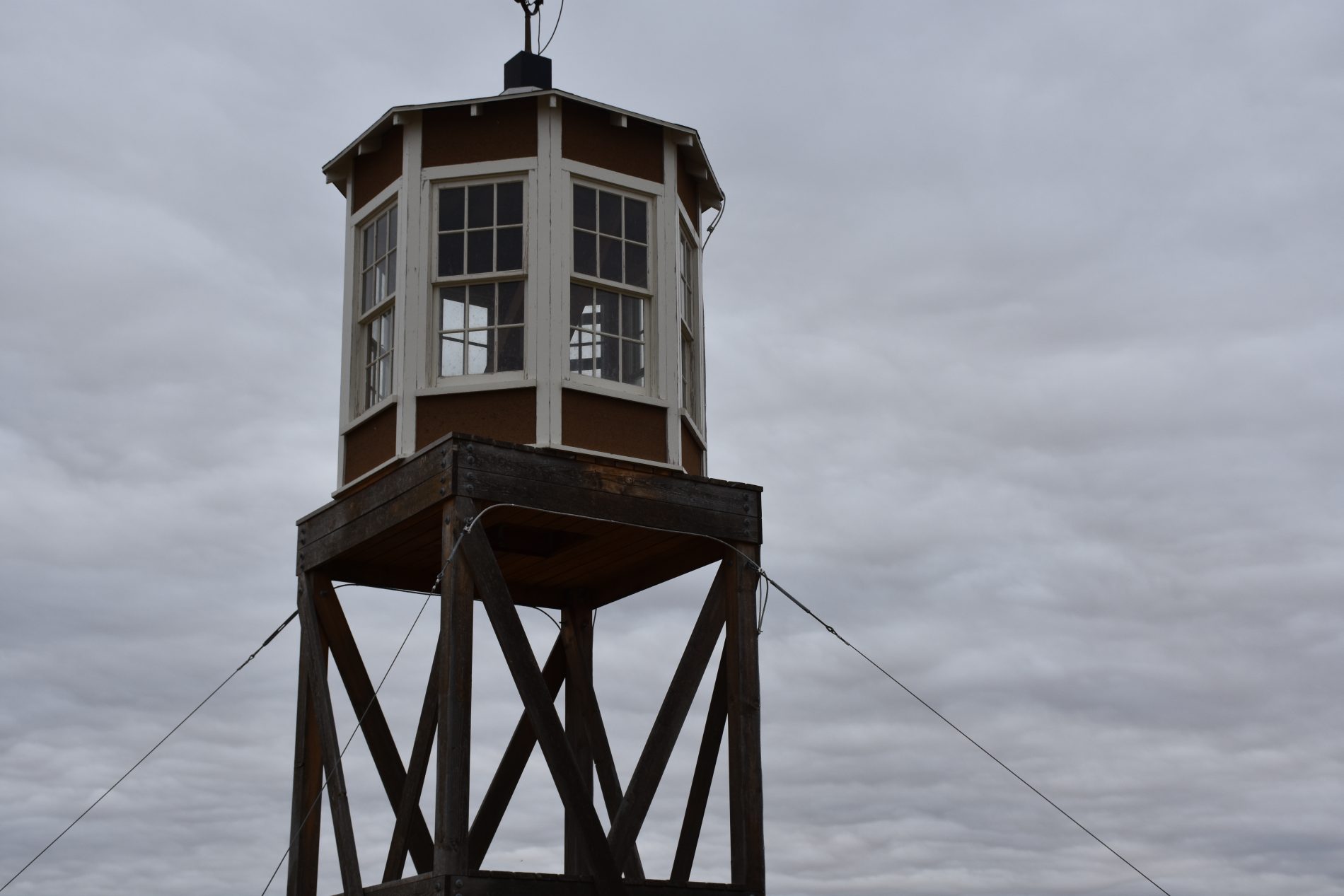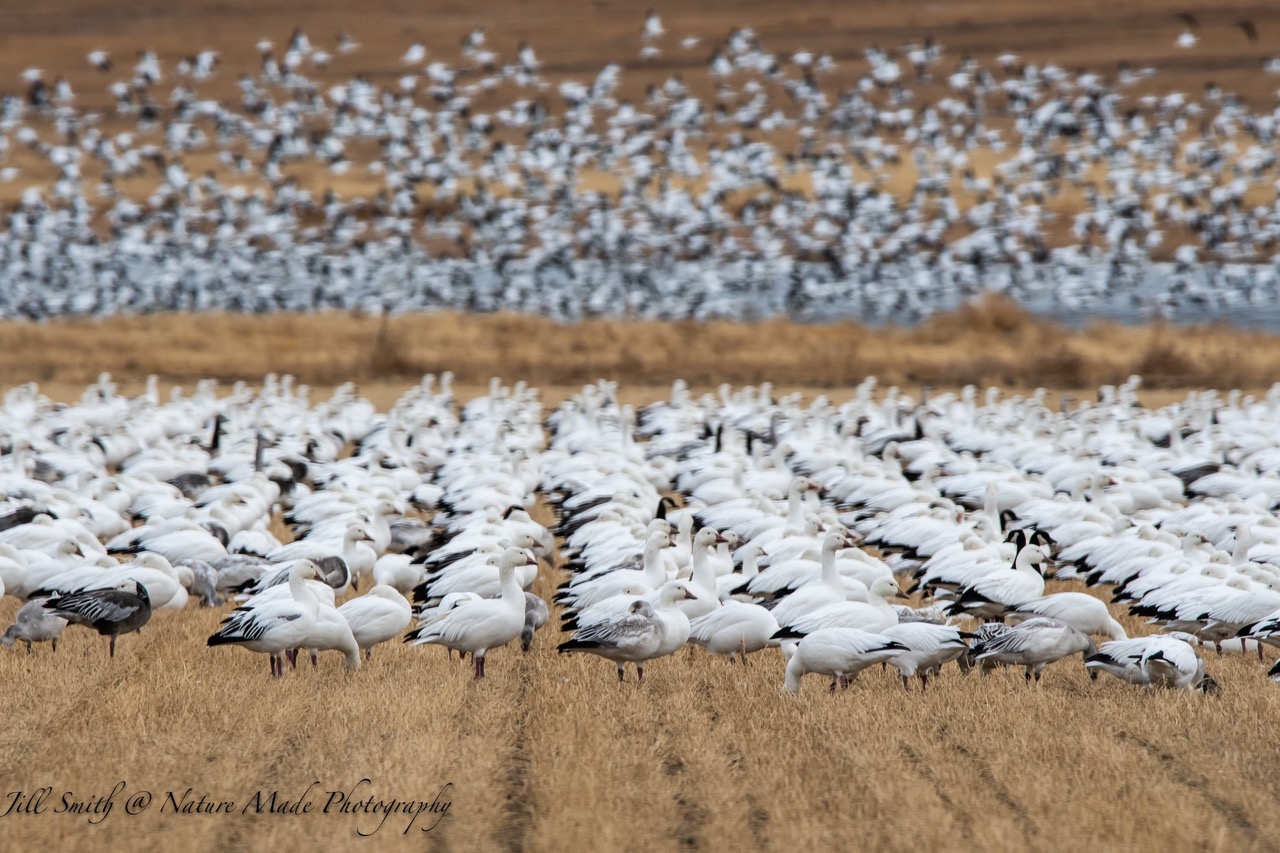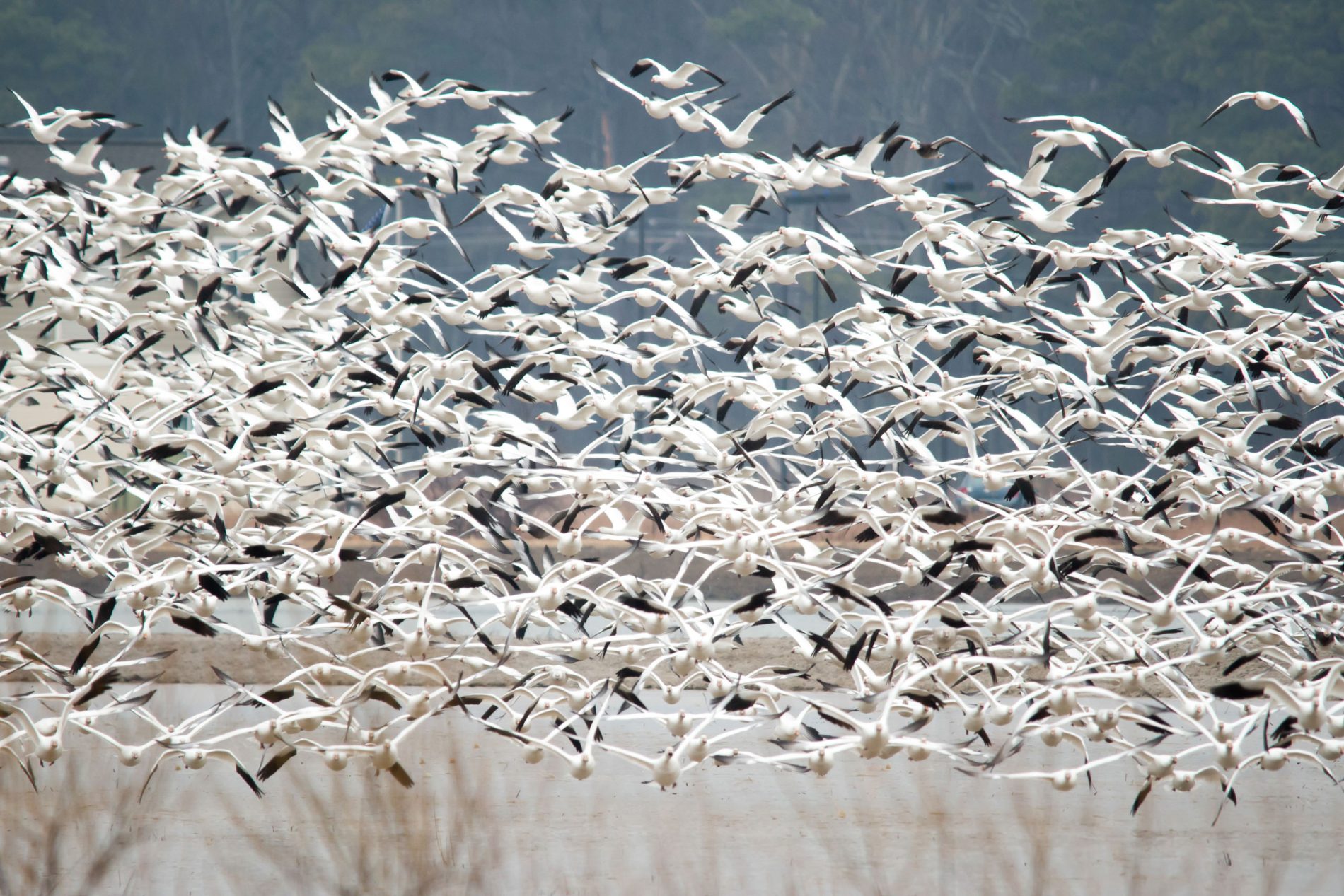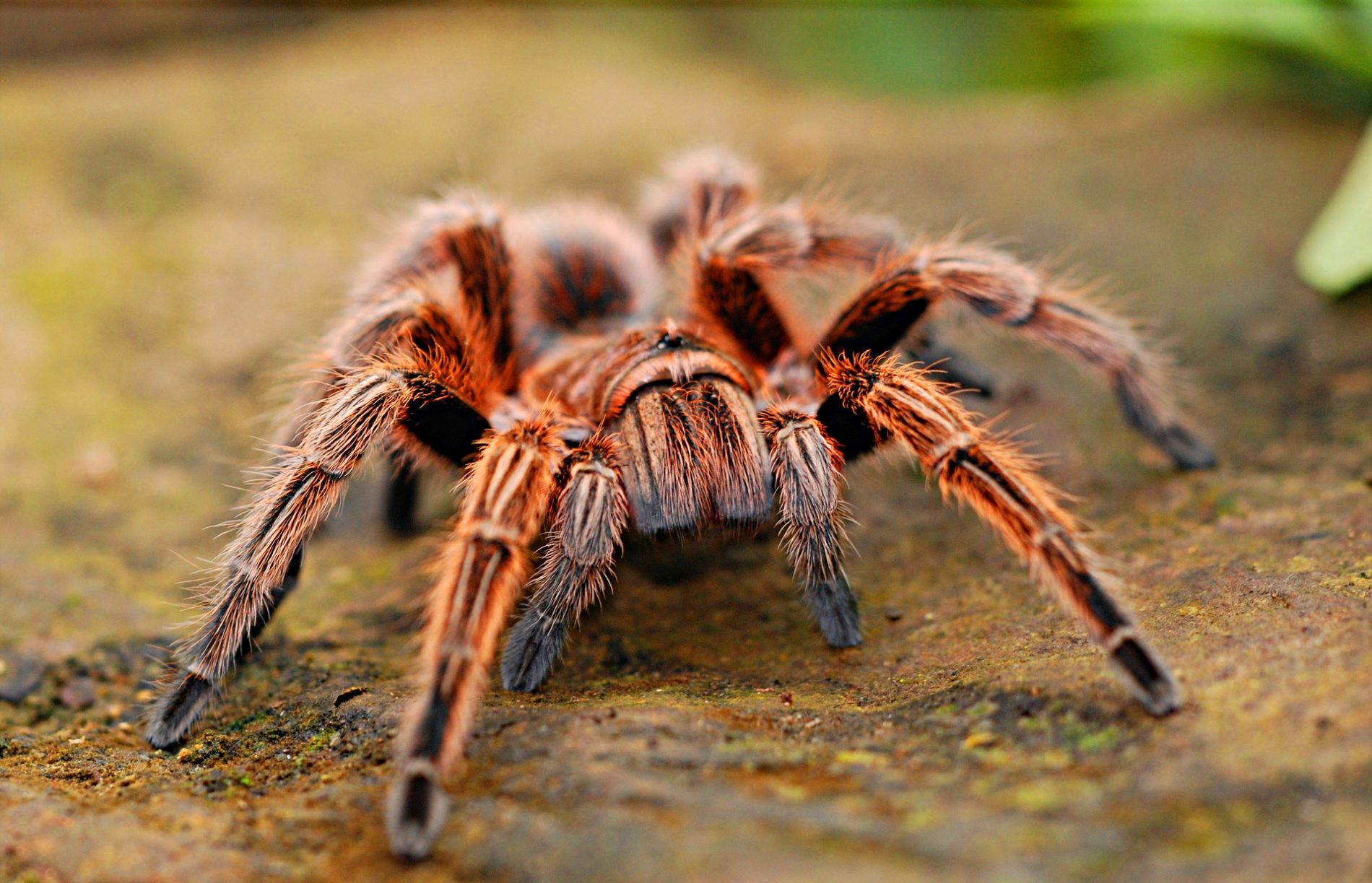
Story Pitch: Interesting Migrations in Southeastern Colorado
The Great Snow Goose Migration
“Each February, waves of bright white snow geese against an endless blue sky fly into southeastern Colorado. They roost on the scattered lakes on the prairie and feed in the surrounding fields, making the area a favorite rest stop on their annual migration.”
During this month, the spring snow goose northern migration begins on the Great High Prairie. In a typical year, 80,000 to 100,000 snow geese returning from their wintering grounds in Mexico, Texas, and New Mexico to their breeding grounds in the Canadian Tundra, stop at local reservoirs to rest and feed on leftover grain in nearby fields.
Not only are these geese beautiful to see, but the sound of tens of thousands of large white geese flapping their wings as they rise from the water is not something easily forgotten.
The northern migration of snow geese is so extensive that the city of Lamar and the Colorado Division of Wildlife (DOW) host the annual High Plains Snow Goose Festival, held on a weekend in late February in Lamar, Colorado.
However, if you can’t make it to the festival, there’s no need to worry. The Snow Geese are available to anyone willing to take the time to see them.
In addition to snow geese, there are many other bird species to view including a large number of eagles that winter in the eastern plains.
During the spring migration, large flocks of snow geese can be found at Queen’s State Wildlife Area as well as Nee Granda, Neenoshe, Upper Queens and John Martin Reservoirs.
The Tarantula Migration
During September, southeastern Colorado enjoys the annual Tarantual Migration phenomenon. It’s during this time that male tarantulas gather in groups and use their senses to seek out female tarantulas.
These spiders tend to be about 8 years old and can be seen crossing roads in words. The best places to see them are in Prowers and Otero counties in southeastern Colorado.
Media Contact:
Lindsay Diamond
lindsay@vistaworks.com
719-395-5700



